When it comes to the pantheons of ancient gods and goddesses, most people would probably consider the Greek pantheon to be the most popular. Not only do they have plenty of epic stories, but the Romans are just a carbon copy of the same pantheon with different names. That said, no ancient civilization matches ancient Egypt regarding the level of complexity and lore connected to the ancient pantheon.
Those who haven’t yet experienced the ancient Egyptian pantheon will likely be overwhelmed by the sheer number of gods and goddesses—and the stories connected to each one. This list acts as an easy-to-understand guide to help those who might be interested in a quick look into the top ancient Egyptian gods and goddesses. Careful though, it’s easy to get obsessed with the ancient Egyptian pantheon!
Isis

Let’s get started with perhaps one of the most interesting deities in the ancient Egyptian pantheon. Unlike many other gods and goddesses, Isis didn’t start out as a significantly powerful deity. In fact, she came from relative obscurity, and slowly but surely grew in importance as the years went by. Isis is the queen of the underworld, and acts as a divine mourner. She’s depicted as a faithful and devoted wife, and she embodied many virtues the ancient Egyptians saw in the ideal woman.
The imagery of Isis with the infant Horus was likely what influenced the imagery concerning Mother Mary and baby Jesus. Isis was known as one of the very last of the Egyptian pantheon that was still worshiped. Even during the time of the Greeks and the Romans, there were still people who worshiped Isis.
Horus

Next on the list is one of those Egyptian gods popular enough that it’s likely many people know his name. Even those who might not have a keen interest in the Egyptian pantheon have likely come across Horus due to his appearances in many different movies and games. Horus is often depicted as having the body of a man and the head of a falcon, which is undoubtedly a look that translates well enough into pop culture as a whole.
It’s said that the eyes of Horus are the sun and the moon, and the reason the moon has so many phases is that he lost the respective eye in a fight against his brother, Seth, to avenge his father, Osiris. We’ll be looking into those Egyptian gods in a bit, as they’re just as important as Horus.
Seth

Aside from being the god of chaos, deserts, storms, and violence, Seth is also considered to be the god of war, similar to his brother, Horus. In the stories, Seth was known as the usurper who murdered his father, Osiris to ascend the throne of gods. Eventually, he does battle with his brother Horus, who tries to avenge his father.
The interesting thing about Seth is that the animal the god represents is shrouded in mystery. At times it looks like a horse, and at others it looks like a dog. Scholars now believe that there is no such animal as what Seth represents, and it’s a kind of mythical, original creation. In the story, Horus defeats his brother and ascends the throne.
Osiris

We’ve talked about the various family members of Osiris, but who was he exactly? In a nutshell, Osiris is one of the most important members of the Egyptian pantheon, as he reigns over the underworld. He’s known as the god of death and resurrection, with traits similar to the great Nile. The reason why the ancient Egyptians saw Osiris as the Nile was due to its merciless nature. While the river offered life, it also had a tendency to flood, which was why they associated Osiris with death and resurrection.
As the gods and goddesses are often seen as rulers of Egypt, the story of Osiris was that he was a king of Egypt who was eventually murdered by his son for the throne. He was dismembered, but was put together by his wife, Iris. Such is the reason why he’s depicted as having green skin.
Anubis
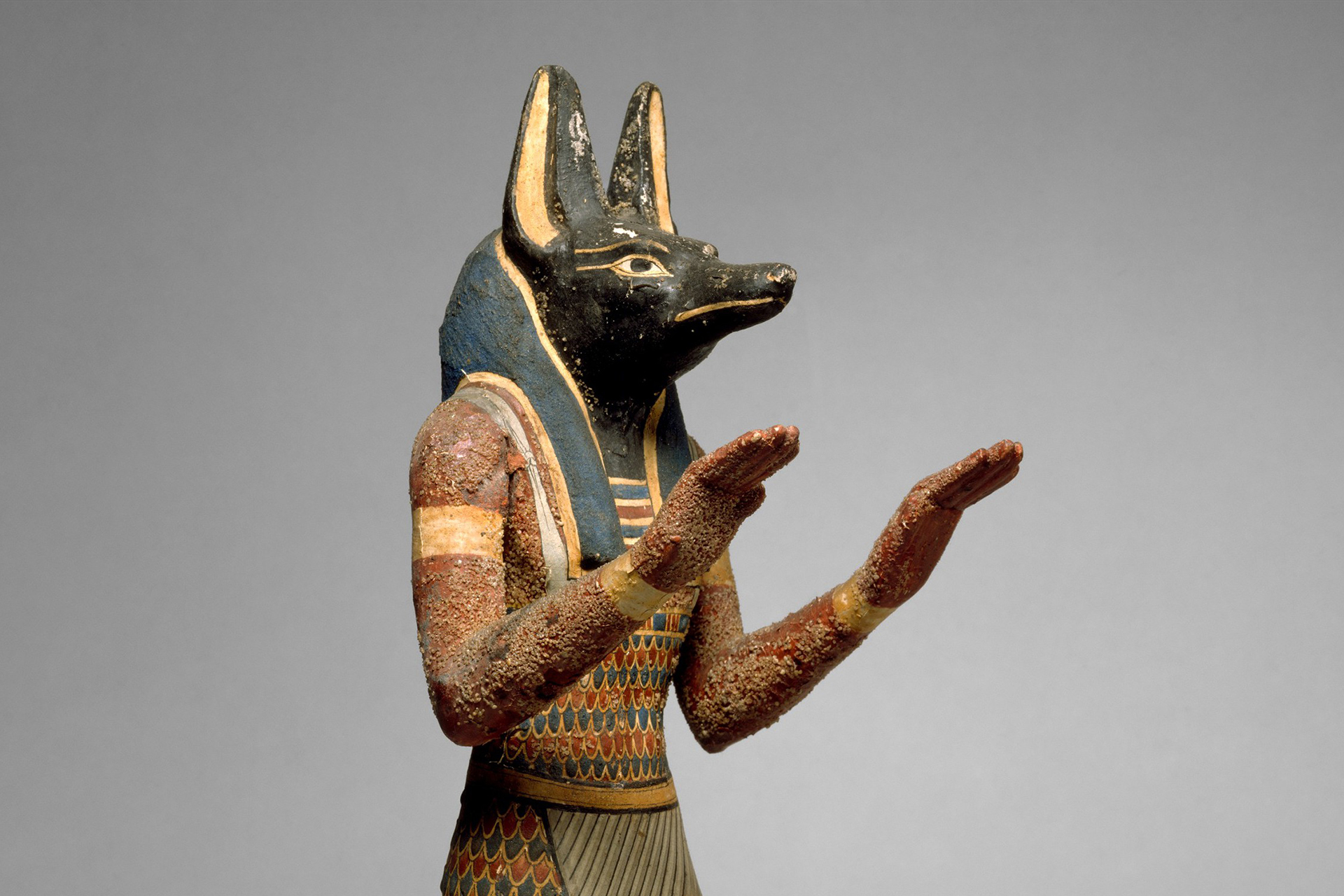
Similar to Horus, Anubis was another god that somehow constantly made it to pop culture—and so his general popularity increased as a result. Anubis is usually depicted as having the head of a jackal, and the body of a man, following the general motif of the most popular gods having the head of an animal and the body of a human being. While Osiris is the god of death and resurrection, Anubis is considered the god of the dead, and many of his responsibilities involve funeral rights.
When Osiris was dismembered by Seth, Anubis was the one who embalmed him, which was why Anubis was considered the patron god of embalmers. The reason why the head of Anubis is that of a jackal is likely due to the animal’s reputation as scavengers.
Thoth
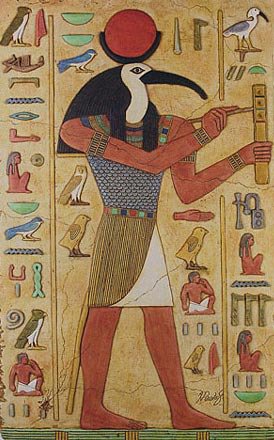
There’s no denying that the ancient Egyptians were the pioneers of modern writing as we know it today. Before the Egyptians, ancient civilizations would write on clay, stone, or other inefficient materials. The ancient Egyptians developed papyrus sheets, which became the most important writing material of the world for at least three thousand years. Thoth is known as the god responsible for bringing the hieroglyphic script to the ancient Egyptians, serving also as a scribe.
As the god of wisdom and writing, Thoth is said to have knowledge of spells and various other arcane mysteries unknown to the other gods. Thoth also helps Osiris weight the hearts of the dead.
Amon

Now that we’ve spoken about some of the most important and well-known Egyptian gods and goddesses, it’s time to talk about the most powerful of the deities. However, to get to that particular god, we must first talk about two particular deities. The first is Amon, god of the air and whose name potentially means “The Hidden One.” Amon was worshiped in the city of Thebes, and it was said that he took part in a rebellion against foreign rulers known as the Hyksos.
When they finally wrested control and reestablished native Egyptian rule, Amon merged with the god of the sun, Ra, to create Amon-Ra, considered to be the most powerful god in the pantheon.
Ra
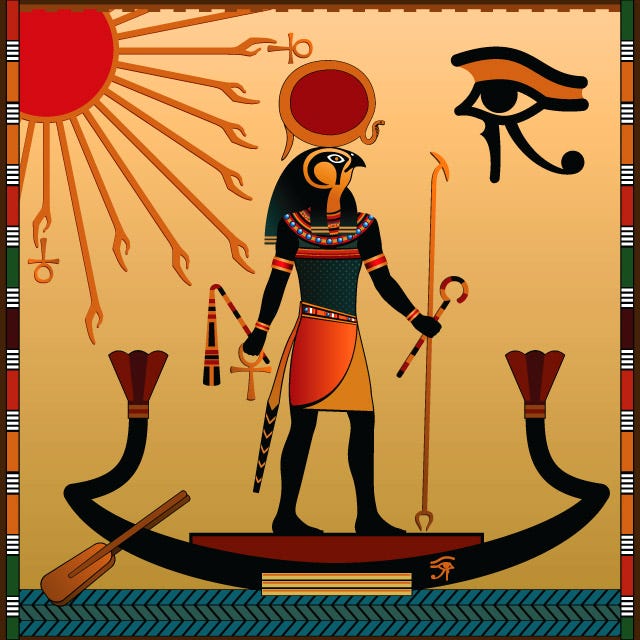
You’ve likely already noticed how the different gods and goddesses of Egypt are associated with many of the same things. For example, the eyes of Horus include the sun and the moon, but his mother Isis is known as the goddess of the moon. Horus himself is a god of war, but so is his brother, Seth. In the case of the sun, Ra is considered the primary god of the sun, but there are other deities that fulfill the same role.
The sun god is depicted as having the body of a man and the head of a hawk, and he was known to travel the sky in a boat. He would travel through the sky each day, and travel through the underworld each night—battling the snake god Apopis for the sun to rise again. His merging with Amon created Amon-Ra, the most powerful Egyptian deity.
Hathor
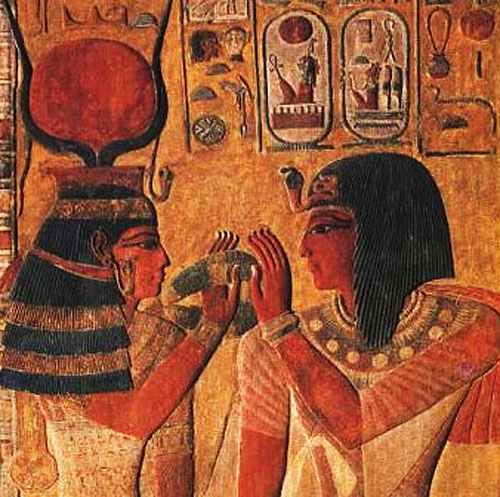
One of the reasons why Isis was so popular was due to her distinction as having the ideal female traits. Hathor was a similar goddess of Egypt, as she represented not only childbirth and fertility, but music as well. She’s usually depicted as having the head of a cow and the body of a woman, or having the ears of a cow.
It was said that Hathor greeted the sun each time it set, and that the ancient Egyptians hoped they were greeted in the afterlife much the same way. Hathor protected those experiencing childbirth, and was said to bless the Egyptians with fertility.
Bastet
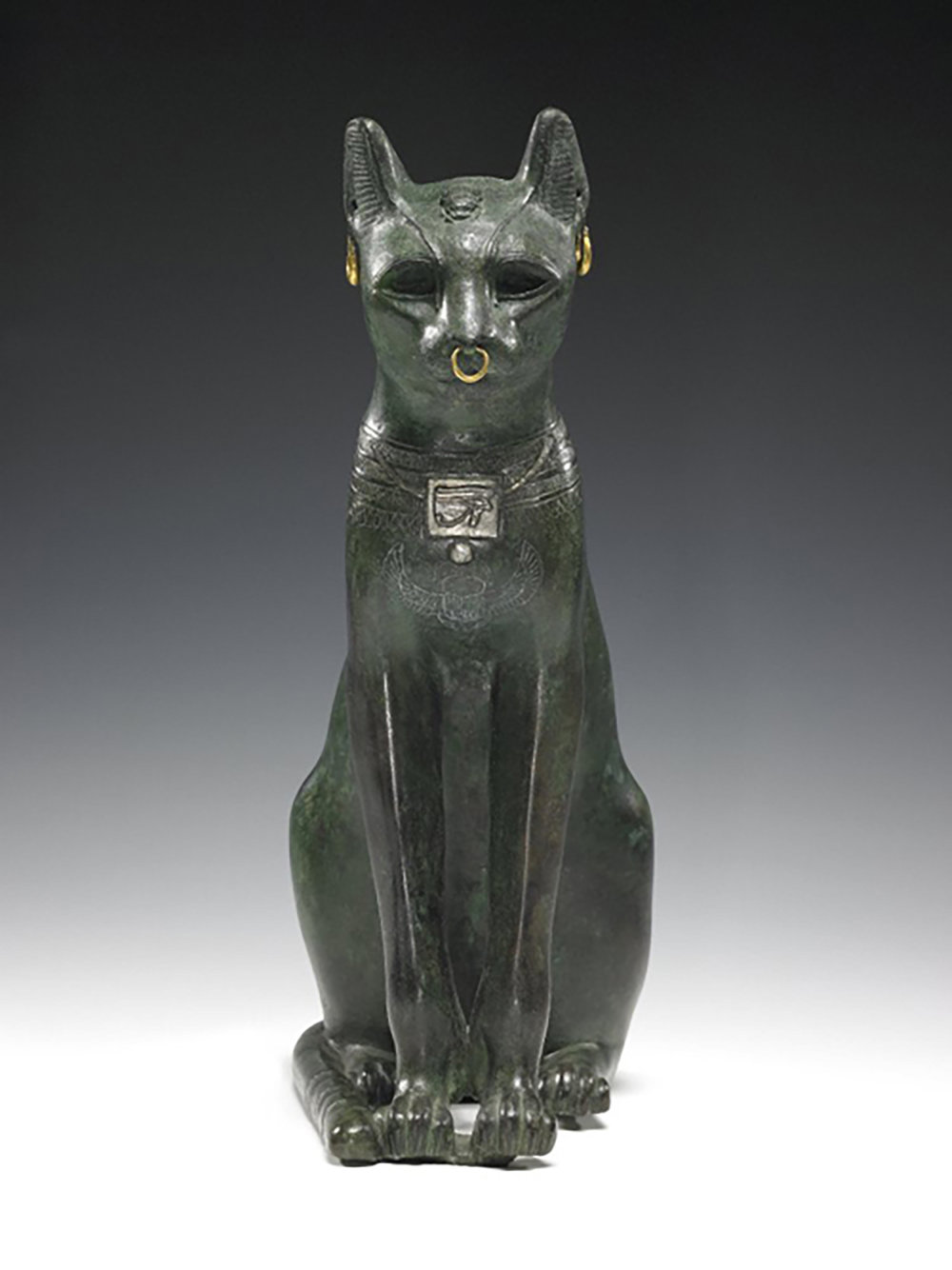
In the famous 1999 film “The Mummy,” the titular villain was shown to be afraid of cats. Such a thing sparked debates about why the mummy was so afraid of cats, and it was likely because the ancient Egyptians saw cats as the guardians of the dead. In the film, the mummy was an undead creature, and likely thought the cat had a means of pulling him back to the underworld.
In the case of the Egyptian pantheon, Bastet is known as the goddess of cats, as well as fertility and childbirth, similar to Hathor though perhaps not quite as prominent. Bastet was even associated with Artemis, Greek goddess of the hunt.